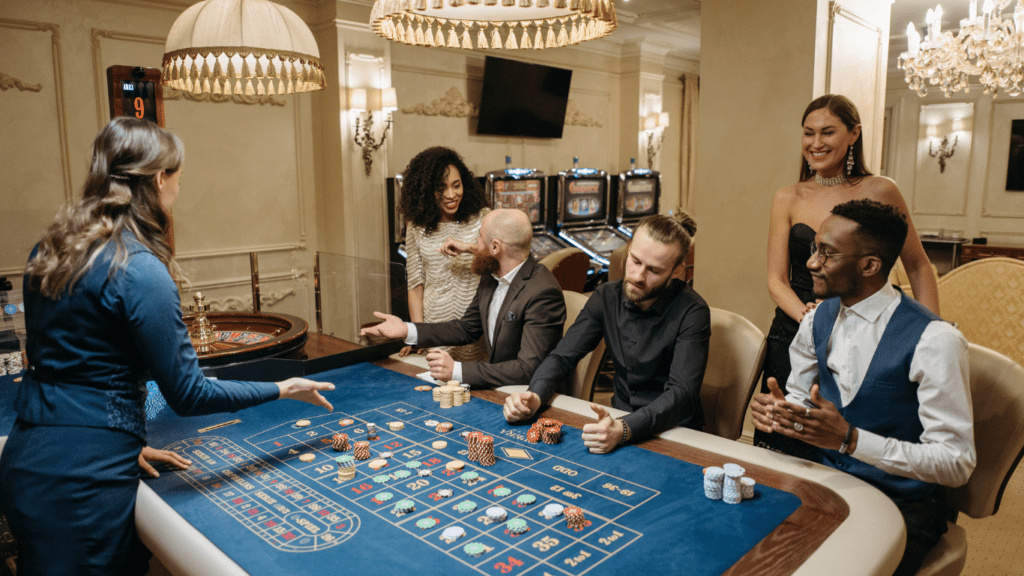The Evolution of Roulette Strategies
Since its inception in the 18th century, roulette has fascinated gamblers with its balance of chance and calculated risk. Early players adopted basic betting systems, focusing primarily on simple patterns and odds. As the game’s popularity grew, so did the sophistication of these strategies.
By the late 19th century, players began experimenting with mathematical approaches. The Martingale System, which suggests doubling bets after each loss, emerged during this time. Although risky, it became a popular choice for many seeking quick gains.
In the 20th century, advances in mathematical theories led to the development of probability-based strategies. The Fibonacci Sequence and the D’Alembert System offered new ways to approach betting, relying less on intuition and more on calculated risk management. These methods aimed to limit losses while capitalizing on wins, offering an alternative to the aggressive nature of earlier systems.
Today, contemporary players often integrate technology into their strategies. Advanced software and algorithms help analyze patterns and outcomes, providing insights that were previously unreachable. While the core principle of balancing risk and reward remains intact, technology enables a more data-driven approach to strategy development.
This evolution showcases how roulette strategies have transitioned from simple guesswork to complex, informed techniques. Understanding this progression is crucial for anyone looking to refine their game and tap into the insights of seasoned players.
Understanding the Basics of Roulette
Roulette is a game of chance that combines strategy and luck. Knowing the fundamentals helps in making informed decisions that align with pro players’ tactics.
Game Variations
There are three main types of roulette:
- American
- European
- French
European Roulette has 37 pockets, numbered 0 to 36, offering better odds with a single zero. American Roulette includes an additional double zero, raising the house edge. French Roulette, similar to European, features unique rules like La Partage or En Prison, which can benefit players by returning half their even-money bets if the ball lands on zero.
Terminology and Rules
Understanding the terminology enhances your gameplay. The “wheel” contains numbered pockets, while the “ball” determines winning numbers. Bets are placed on the “layout” of the table and include “inside bets” like straight or split, and “outside bets” like red/black or odd/even. The “croupier” spins the wheel and manages bets. Rules vary slightly by variation, but learning these basics is crucial for mastering the game and adopting effective tactics.
Insider Tips from Professional Players

Pro players are known for their ability to continuously adapt and refine their strategies in roulette. Focusing on meticulous bankroll management and table selection often leads to more consistent wins.
Bankroll Management
- Managing a bankroll effectively is crucial for long-term success in roulette.
- Professionals establish a budget before playing, ensuring they only wager what they can afford to lose.
- They stick to their limits, resisting the temptation to chase losses which can lead to reckless bets.
- Many use the 1% rule, betting only 1% of their total bankroll per spin.
- This approach minimizes risk by preserving funds during losing streaks, allowing more opportunities to capitalize on winning scenarios.
Choosing the Right Table
- Selecting the appropriate roulette table significantly impacts a player’s chances of winning.
- Experts prefer European Roulette because of its lower house edge compared to American Roulette.
- They look for tables with a minimum bet that aligns with their bankroll size.
- Some professionals also consider atmospheric factors, such as fewer distractions in a quieter environment, thus helping enhance focus and decision-making.
- By opting for tables that complement their strategy, players can maximize their potential for success.
Analyzing Popular Roulette Tactics
Exploring popular roulette strategies uncovers the blend of probability and psychology that professional players use. Mastering these tactics enhances my chances of achieving more consistent wins.
Martingale Strategy
The Martingale strategy involves doubling bets after each loss, aiming to recover previous losses with a single win. This tactic suits players with substantial bankrolls since consistent play requires high investment. From my experience, this method thrives in short-term sessions but faces significant risks over prolonged gameplay due to table limits and the potential for extended losing streaks.
Reverse Strategy
Unlike the traditional Martingale, the Reverse Martingale strategy or Paroli focuses on increasing bets after wins, minimizing risk by issuing smaller initial stakes. I notice it’s particularly effective in capitalizing on winning streaks while safeguarding profits. Players often set predetermined profit targets or limits for losses, making it a more conservative approach compared to its counterpart.
Combination Bets
Combination bets involve placing wagers on multiple numbers or outcomes within a single spin to distribute risk. I find that creating a balanced array of inside and outside bets leverages opportunities for varied payouts. This multifaceted approach mitigates risk by increasing the chances of winning at least one bet per spin, though it requires skillful management to avoid spreading too thin and reducing overall profitability.
Developing a Personalized Winning Strategy
Crafting a personalized roulette strategy involves understanding your playing style and establishing achievable goals. Identifying these components enhances your ability to make informed decisions at the table.
Identifying Your Playing Style
Assessing your playing style is essential. Do you prefer high-risk, high-reward bets, or are you more conservative with low-risk options like outside bets? Understanding your comfort with risk and how it aligns with specific roulette systems is key. For instance, aggressive players might gravitate towards the Martingale strategy, while cautious players may opt for combination bets focused on minimizing losses. Recognizing these tendencies can guide strategy development.
Setting Realistic Goals
Setting realistic goals keeps your roulette experience enjoyable and aligned with your strategy. Determining what you aim to achieve—whether it’s short-term enjoyment or long-term profit—helps define your approach. Establish specific benchmarks, such as the amount you’re willing to win or lose in a session, to maintain control over gameplay. When aligning goals with your risk tolerance and bankroll, you increase your likelihood of consistent wins.
The Psychological Edge in Roulette
Successful roulette players possess not only tactical acumen but also a psychological advantage that aids in consistent wins. This mental aspect involves managing emotions and discerning potential triggers in gameplay.
Keeping Emotions in Check
Calmness is critical when playing roulette, as emotions can cloud judgment and lead to impulsive decisions. I maintain my focus by setting strict loss limits before sitting at the table. Engaging in deep breathing exercises during gameplay helps me stay collected and prevents frustration from influencing my actions. By managing emotions effectively, I make reasoned choices aligned with my strategic goals.
Recognizing Patterns and Triggers
Identifying patterns, whether real or perceived, often guides decision-making in roulette. Although the game is based on random outcomes, I remain observant of betting trends and wheel behaviors. Recognizing my responses to various scenarios helps me adjust strategies accordingly. By understanding these triggers, I anticipate shifts in gameplay and adapt my tactics, maintaining a psychological edge over the course of my session.



 Community Engagement Manager
Raymundo Stricklandics serves as the Community Engagement Manager for Dice Gamblers Deal, where he is dedicated to creating meaningful connections with the platform’s audience. His role focuses on fostering an active, engaged community of players by interacting with readers, answering their questions, and ensuring their experience with the site is both enjoyable and informative. Raymundo is deeply passionate about building relationships with fellow gambling enthusiasts, whether through social media, email communications, or direct interaction on the site’s forums. He works tirelessly to ensure that the platform not only provides valuable information but also offers a supportive space where players can share their experiences, tips, and success stories. Raymundo also plays a key role in customer support, addressing user inquiries and providing personalized advice to help players navigate the world of table games and betting strategies.
Community Engagement Manager
Raymundo Stricklandics serves as the Community Engagement Manager for Dice Gamblers Deal, where he is dedicated to creating meaningful connections with the platform’s audience. His role focuses on fostering an active, engaged community of players by interacting with readers, answering their questions, and ensuring their experience with the site is both enjoyable and informative. Raymundo is deeply passionate about building relationships with fellow gambling enthusiasts, whether through social media, email communications, or direct interaction on the site’s forums. He works tirelessly to ensure that the platform not only provides valuable information but also offers a supportive space where players can share their experiences, tips, and success stories. Raymundo also plays a key role in customer support, addressing user inquiries and providing personalized advice to help players navigate the world of table games and betting strategies.
